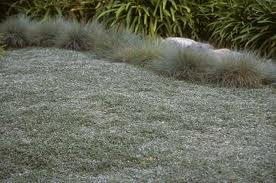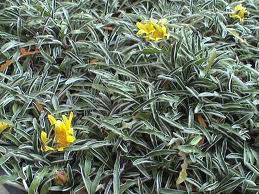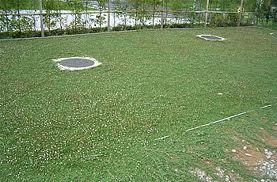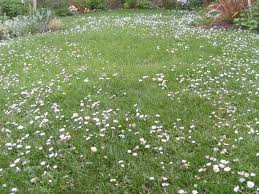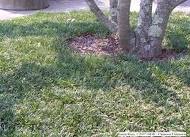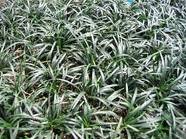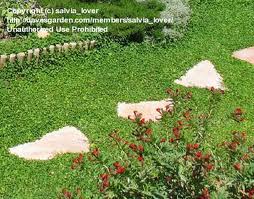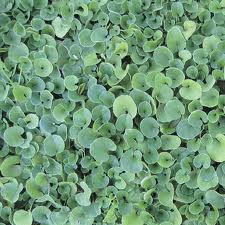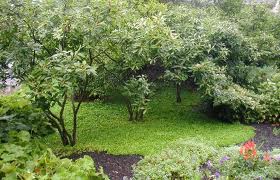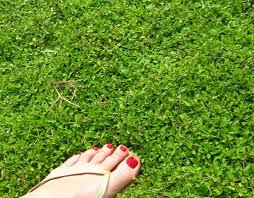Lawn Subsitutues
So I we started the week with something lighthearted as well as thought provoking. If you missed it (https://roomtogrowgardens.wordpress.com/2011/07/04/god-and-lawn-care/)
Now don’t get us wrong, Lawn certainly has it’s place in suitable landscape settings, but we should and can offer more waterwise, lower maintenance and practical options such as:
Dymondia margaretae
This beauty is widely used in horticulture as a hardy, stout groundcover and filler between stepping stones. It is a valuable landscape plant with its attractive appearance and hardiness and can be used in rockeries and coastal gardens. It is also well known as a lawn substitute. It handles light or limited pedestrian traffic and survives with lower water consumption than grass, making it an excellent water-wise alternative.It is a valuable plant in a coastal garden, helping to limit wind erosion in bare patches and retain soil on slopes. In areas of high rainfall it should be grown on a generous slope or raised rockery to improve drainage. It will tolerate being grown in light dry shade, but dies back in large unsightly patches if overwatered. It is tolerant of light frost.
Lippia repens
Commonly known as Daisy Lawn, this ground-hugging perennial has excellent tolerance to foot-traffic, even children and dogs. Clusters of white to lavender-pink flowers appear from spring to autumn. Flowers are attractive to bees; mow periodically if this is a problem. Forms a neat, dense mat of grey-green oval leaves. An ideal turf substitute where hardy. Very drought tolerant once established. Will take semi shade to full sun conditions.
Ophiopogon japonicas
A ground cover that looks like turf grass but needs less water. Dwarf mondo grass is similar to liriope (Liriope muscari), but it has thinner leaves and a finer texture. It grows 5 to 10cm tall. When established, it is drought-tolerant, pest-resistant and only has to be mowed once a year. Dwarf mondo grass grows well in shade where turf grass is difficult to grow. It will adapt to sunny sites if it is irrigated during establishment.
Dichondra repens
Commonly known as Wonderlawn this creeping-species has single, round- to heart-shaped leaves and covers densely. It is best planted in full sun to semi-shade. Suitable for most growing regions without severe frost and is ideal for areas with high summer rainfall. Wonderlawn does require regular watering and well-draining soil, enriched with compost. A Spring-application of complete fertiliser is recommended and one must watch out for fungal diseases.
Dichondra Repens is a warm season ground cover that grows close to the ground. It has broad, almost circular leaves and when mown low establishes a thick dense carpet look. Originally a weed, it is now used in many ground cover situations where normal grasses may not do as well. It has a bright green color and a cushion feel underfoot. Beautiful in landscaping areas of no maintenance where adapted, and does not need to be mown. When used in lawn situations it can be mown for an even, smooth finish. It needs well draining soils and deep waterings, not shallow waterings.
Mazus reptans
Mazus is a low-growing ground cover which typically grows only to 5cm tall. Creeping Mazus is easily grown in average, medium to wet, well-drained soil in full sun to part shade. Prefers moist, rich soils and will tolerate foot traffic and an infrequent mowing. It features narrow, bright green leaves (to 2cm long) that form a dense, attractive carpet of foliage which remains green throughout the growing season and well into the autumn. Foliage is evergreen in South Africa. Tiny, purplish-blue, tubular, 2-lipped flowers with yellow and white markings appear in small clusters in late spring to early summer. Excellent ground cover for small areas and is also effective grown between stepping stones or in rock gardens. Slugs and snails may be a problem.
It is important to remember that like lawn and other other plant species, these substitutes have specific light, soil and water requirements and one must be sure that the right alternative is chosen in order that the plant is able to deliver on your expectation as well develop and grow healthily.
